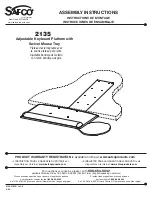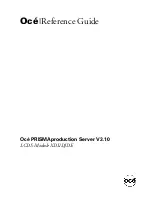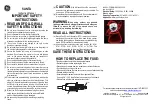
Oxymax W COS51D
Device description
Hauser
17
5.3
Calibration
Calibration is a means of adapting the transmitter to the characteristic values of the sensor.
As normally no zero calibration is required for the sensor, a single-point calibration is carried out in
the presence of oxygen.
Normally, sensor calibration is seldom necessary. It is necessary after:
• First commissioning
• Replacing a membrane or electrolyte
• Cleaning the cathode
• Long breaks in operation without power supply
Within the framework of system monitoring and supervision, for example, the calibration can also
be cyclically monitored (at typical time intervals, depending on operating experience) or renewed.
5.3.1
Types of calibration
You can carry out single-point or two-point calibration for the sensor.
In most applications, single-point calibration suffices in the presence of oxygen (=calibration of
measured value at air).
The additional calibration of the zero point (two-point calibration) improves the precision of the
measurement results in the trace range. Calibrate the zero point with nitrogen (minimum 99.995%)
or with water free from oxygen, for example. In doing so, make sure the measured value has settled
correctly (20 to 30 minutes) to avoid incorrect measurements in the trace range at a later stage.
Types of calibration:
• Slope:
– Air (saturated with water vapor, e.g. near the water surface)
– Air-saturated water
– Variable air (entering the current relative humidity and the absolute air pressure)
– Data entry
• Zero point:
– Zero point calibration (nitrogen or water free from oxygen)
– Data entry
• Reference:
– Grab sample calibration
– Offset
– Slope
5.3.2
Calibration intervals
The calibration intervals depend heavily on:
• The application and
• The installation position of the sensor.
You can determine the intervals with the following method:
1.
Check the sensor one month after its being put into operation:
– Remove the sensor from the medium.
– Clean the outside of the sensor with a damp cloth.
– Then dry the sensor membrane e.g. by using a tissue.
– Measure the oxygen saturation index at air after 10 minutes.
Decide using the results:
a. If the measured value is not at 102 ±2 %SAT, you have to calibrate the sensor.
b. Otherwise, double the length of time to the next inspection.
2.
Proceed as per Point 1 after two, four and/or eight months. In this way, you can determine
the optimum calibration interval for your sensor.
!
Note!
Be sure to calibrate the sensor at least once a year.
Содержание Oxymax W COS51D
Страница 1: ...BA413C 07 en 10 08 71083533 Operating Instructions Oxymax W COS51D Digital sensor for dissolved oxygen...
Страница 31: ...Oxymax W COS51D EC Declaration of Conformity Endress Hauser 31 11 EC Declaration of Conformity...
Страница 34: ...Oxymax W COS51D 34 Endress Hauser...
Страница 36: ...www endress com worldwide BA413C 07 en 10 08 Printed in Germany FM SGML 6 0 DT...
















































